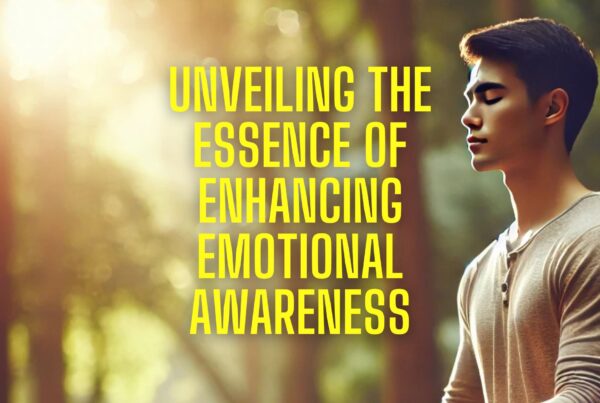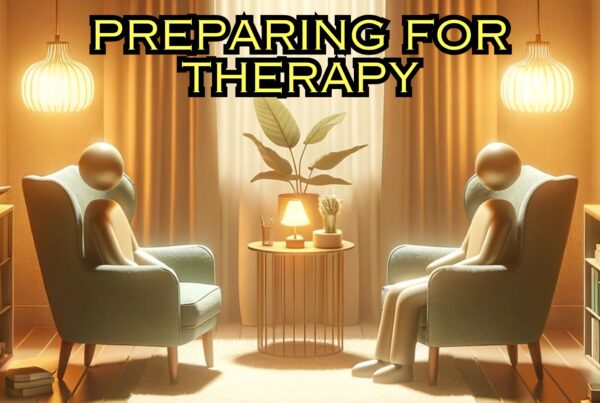The Power of Commitment in Therapy: Why Doing the Work Matters
Everyone attends therapy in the hope of making change in their lives. Some people find that therapy gives them the tools they need to engage with their thoughts and feelings differently. Other people, however, come to therapy thinking the role of the therapist is to ‘fix them’. As a result, they often fail to do any work on themselves in between sessions and, ultimately, fail at getting the outcome they want. They fail to recognise that their lack of commitment to therapy and doing the work that matters is really what is at fault.
The Misconception of the “Magic Cure” in Therapy
It’s often believed that simply attending therapy sessions and sharing one’s story will magically cure all ailments. It becomes more of a commitment to reliving their story over a commitment to therapy. This misconception can lead to disappointment when the desired results aren’t immediately achieved. While the therapeutic space provides a safe environment to express and process feelings, it’s the work done outside of these sessions that truly catalyzes change.
In therapy, especially with techniques like hypnosis and mindfulness, the real transformation occurs when clients take the insights gained during sessions and actively apply them in their daily lives. It’s understood that building new habits and breaking old patterns requires consistent effort, repetition, and commitment.
The Importance of Active Participation
When clients come to therapy, they’re often handed tools and strategies to help them navigate their challenges. However, merely understanding these tools isn’t enough. Imagine being given a musical instrument and expecting to play it proficiently without ever practicing. Similarly, understanding therapeutic frameworks without actively practicing them can lead to a false belief that they’re ineffective.
This passive approach can be dangerous. Clients might find themselves trapped in a cycle of understanding without application. They might think, “I know all about mindfulness, but it just doesn’t work for me.” In reality, the issue isn’t with the technique but with the lack of consistent practice. As I’ve always said, ‘you can read every book on how to swim but it won’t mean anything unless you’re in the water.’
Building New Habits: It’s More Than Just Repetition
Building new habits isn’t just about repetition; it’s about deepening one’s understanding and refining one’s approach with each attempt. Every time a client practices a therapeutic technique, they’re not just repeating an action; they’re reinforcing a new way of thinking and being.
Moreover, the process of building new habits also involves unlearning old ones. Old habits, especially those formed as coping mechanisms, can be deeply ingrained. They’ve been practiced and reinforced for years, if not decades. Overcoming them requires patience, persistence, and, most importantly, consistent effort outside of therapy sessions.
If you go to see a physiotherapist for tennis elbow, they will work on the sore point and give you exercises to do. You won’t leave feeling that the issue is fixed straight away. It requires work until a shift is felt, and the exercises you do outside of the session play a big part in that. The same applies here.
Mindset and Identity: The Pillars of Therapeutic Success
Mindset plays a crucial role in therapy. A growth mindset, one that believes in the ability to change and grow, can significantly impact therapeutic outcomes. When clients believe they can change, they’re more likely to put in the effort required to make that change happen.
On the flipside, those who don’t believe they can change, will struggle to make that change. Maybe there is a part of them turning up because they want to say, ‘see, I tried everything and I just can’t change.’ As Thomas Ford once said, “Whether you think you can, or you think you can’t–you’re right.”
Identity, too, plays a pivotal role. How clients see themselves, their self-concept, can either support or hinder their therapeutic journey. For instance, if a client identifies strongly with their anxiety, believing it’s an unchangeable part of who they are, they might resist techniques that challenge this belief. On the other hand, if they see their anxiety as a challenge they’re facing rather than a defining characteristic, they’re more open to change.
Incorporating mindset and identity work into therapy can help clients shift from a passive to an active role in their healing journey. It empowers them to take charge of their lives, to believe in their ability to change, and to put in the work required to make that change a reality.
In Therapy and Beyond: Commitment in Therapy
Therapy isn’t just about the hour spent in a therapist’s office. It’s about the hours, days, and weeks in between sessions. It’s about taking the insights, tools, and strategies learned in therapy and actively applying them in daily life.
For those seeking to overcome challenges, remember that therapy is a partnership. Therapists provide guidance, support, and tools, but it’s up to the clients to use them. It’s not their role to fix you or to tell you what to do, but to create the space so that you can explore options that work best for you. By committing to the work, both in and out of sessions, clients can truly transform their lives.
Release Hypnosis Can Help With Your Commitment To Therapy
Since 2016, Lawrence Akers has been working under the name Release Hypnosis offering Hypnotherapy and ACT based work to the people of Melbourne or an online service. Based on St Kilda Rd, Release Hypnosis is an easy and convenient location to get to and accessible by the ANZAC station train and tram stop. Release Hypnosis can help with a wide range of presenting issues, and I offer a free 30 minute no obligation discovery call for those who are unsure if hypnotherapy is the right way forward for them.
If you have a strong commitment to therapy and you’re ready to make change in your life, then Lawrence will be more than happy to assist you.
Book Your FREE 30 Minute Consultation With Release Hypnosis NOW!
You may also like to read:
Discovering Purpose and Values: A Path to Mental Well-being
Can’t Visualise in Hypnosis? Here’s What You Can Do Instead.
Dealing with Financial Stress and Crisis: Finding Peace Amid Turbulence
What Is The Success Rate of Hypnosis?
Release Hypnosis Melbourne Hypnotherapy is accessible for people in: Abbotsford, Armadale, Albert Park, Balwyn, Bentleigh, Black Rock, Box Hill, Brighton, Brunswick, Bulleen, Bundoora, Camberwell, Canterbury, Carnegie, Caulfield, Chadstone, Cheltenham, Clayton, Coburg, Collingwood, Deer Park, Doncaster, Elsternwick, Eltham, Elwood, Epping, Essendon, Fairfield, Fitzroy, Footscray, Glen Iris, Glen Waverley, Glenhuntly, Greensborough, Hampton, Hawthorn, Heidelberg, Highet, Ivanhoe, Kew, Kooyong, Lalor, Laverton, Lower, Plenty, Macleod, Malvern, Middle Park, Moonee Ponds, Melbourne, Moorabbin, Mount Waverley, Murrumbeena, Northcote, Oakleigh, Ormond, Parkville, Pascoe Vale, Port Melbourne, Prahran, Preston, Richmond, Rosana, Sandringham, South Yarra, South Melbourne, Spotswood, St Albans, St Kilda, Surrey Hills, Templestowe, Thornbury, Toorak, Tullamarine, Williamstown, Yarraville, North Melbourne, Windsor, East Melbourne, Melbourne, Melbourne CBD, Melbourne 3004








